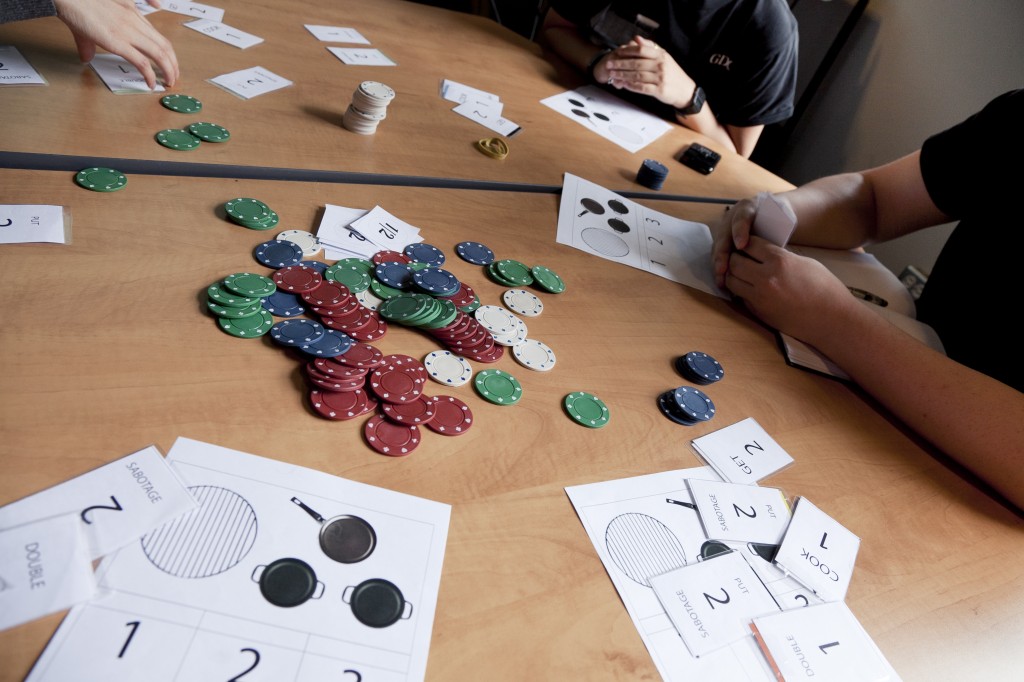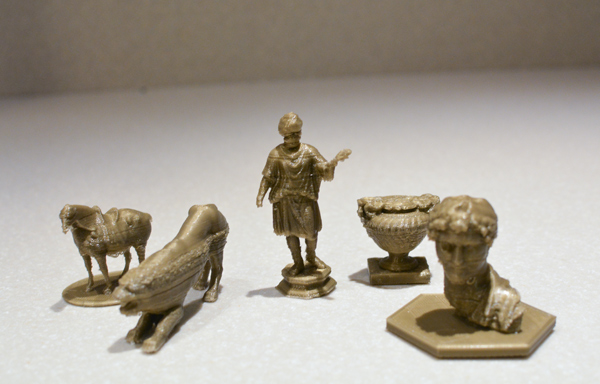This post is Part 2 of the one published two weeks ago, 15 technological trends in the museums in 2015 /1
Conxa Rodà
8. Augmented reality (AR) and virtual reality (VR)
The major contribution of virtual reality is that it allows us to do what is not possible in the real world: to travel in time and space from a spot. For museums it offers great potential, if we know how to use it well to reconstruct environments from the past, to provide context, to aggregate extra layers of information – textual, sound, photographic, audiovisual, of animation, in 3D, etc., to that which we have in front of us, so as to offer immersive and participative experiences.
The Augmented reality, that allows virtual information to be incorporated into real information, has for some time provided interesting experiences for museums. In 2015 we foresee more and more museums making use of it to offer new layers of interpretation to the collections.
Lots of good examples out there. Amongst them, in catalonia, the app Terrassa Augmentada, based around 19 buildings, to get to know the industrial and Modernist heritage in that Catalan town; the app developed for the Asian Museum of Art of San Francisco for the exhibition Terracotta Warriors, in which by means of AR objects are superimposed in 3D in the real space; or the AR of the Acropolis Museum.

Augmented Reality in the Acropolis Museum, Athens. Image: CHESS project
In the article Using Augmented Reality in the Museum, based on a pilot project and the European project meSch, some AR challenges in museums were fixed such as the functionalities offered, the clear explanation about what exactly the users can expect, the signposting or the usability.
If we talk about advanced virtual reality, we should mention the new generation of VR devices such as the Oculus Rift, which allows immersive visits to be made of museums and archaeological sites. The device provides you with an immersive and intuitive surfing experience that transfers the subtle movements of the head to the field of virtual vision.
Image: https://www.oculus.com/rift/
The augmented reality incorporated in games, which we will talk about right now, and integrated in the Google Glass and other wearables, has some natural fields of growth. Augmented content, augmented vision, augmented museum.
9. Gamification
Gamification refers to the technique and practice, of applying the mechanics of games to fields in which it is not applied habitually, with the aim of provoking new learning and new experiences. As Oriol Ripoll defines in his excellent article To gamify means to make people play, “Gamifying means providing game experiences in non-game contexts”. With a certain experience in business management, everything suggests that it will be a growing trend. According to a prediction by Gartner, “in 2015 more than 50% of the companies that manage processes of innovation will be gamifying these processes”. I don’t know if this prediction made in 2011 has been fulfilled, but if it doesn’t reach 50%, it surely is a growing trend in business and educational environments, and increasingly so in cultural ones.
According to the book Gamificación en la Empresa: Lo que los videojuegos nos enseñan sobre gestionar personas, (Gamification in the Company: what video games teach us about managing people) various studies have demonstrated that video games contribute to:
■ improvement and speed in decision-taking
■ faster thought and sharper memory
■ better motor and visual coordination
■ more creativity
■ learning fostering
All these characteristics also have their good application in the professional field.

Gamification techniques. Photo: Albertojuanse, http://commons.wikimedia.org/wiki/File:Gamification_techniques_3.jpg
From creating gamified activities for our users to applying challenges and resolving enigmas in professional settings, a wide range of possibilities are opened up for museums and other cultural centres.
Some of the benefits for museums of using gamification could be:
■ to attract new audiences and to reach the youth public
■ to engage the visitors with the content of the collection
■ to transmit knowledge by means of interaction and narrative
■ to encourage critical analysis, observation, imagination and creativity
■ to provide users participation in the adventure of exploration and discovery
■ to innovate in the way of connecting museum and audiences
And during the development of the project itself, we also see benefits in internal terms such as helping to rethink our content in an imaginative way and fostering the collaboration between multi-disciplinary teams.
We can also find creative initiatives in the museums, such as Playing with Art: The gamification of non-game spaces from the SFMOMA- The San Francisco Museum of Modern Art, already in 2012, for encouraging the visitors to break away from the traditional way of visiting a museum. Examples in our country include the treasure hunt, called The hidden city of the Cultural Centre of the Born or the new video game Nubla of the Museo Thyssen. For more examples, don’t miss the excellent analysis and collection in the blog of Documotion done by Betina Lippenholtz: Gamification in the museums. And for the professionals of museums and those interested in the topic, it could be very interesting to read the discussion page about gamification of the Horizon Museums Report with interesting reflections and good examples.
In innovation, productivity, taking on tasks (missions), problem-solving, orientation towards results, staff involvement or attraction and satisfaction of users, gamification, facilitated by technology, is being seen as a good tool in the digital strategy for internal and external engagement. It will be necessary, for sure, to do it well. There are many examples of games which haven’t been planned or carried out well enough, and this can lead to frustration and the demotivation of the user, just the opposite reaction we aim to achieve. It should be done with sense, quality, wit and creativity.
10. 3D Printing and 3D scanning
The 3D printers produce three-dimensional physical objects based on a digital model. Their use is very extended in architecture, industrial design and also in the medical field. For museums they offer multiple uses in research, exhibition and education, which should be further explored. We will comment on various initiatives from museums from all over the world.
3D printing of museum objects offers various possibilities for getting the works closer to the public. We maybe, first of all, only think of people who are visually impaired, given that it allows the exploration by touching the objects. But they are also useful for the public in general and for education: they are a major tool for feeling the weight and the balance of a sculpture, to follow the contours, as well as letting you see the work from all the different angles, with much greater facility than with the original object. In the Brooklyn Museum they use 3D productions for educational sessions –Teaching with a 3D Simulacrum– and they offer a a monthly Sensory Tour, open to all visitors.

Chess pieces made from objects found in the Departments of Asian Art and Greek and Roman Art, of the MET, by Decho Pitukcharoen, METLab, http://www.metmuseum.org/about-the-museum/museum-departments/office-of-the-director/digital-media-department/digital-underground/2014/3d-printing-booklet
The British professional association, The Collections Trust, makes some very interesting points about the disruption it represents and seven different types of uses for museums such as the tactile experience, research, commercialization and innovation. In Berlin various museums are also developing 3D printing and scanning so as to offer a more complete visitor experience.
3D scanning, moreover, can have applications without the need to print, such as the elaboration of virtual catalogues in 3D or three-dimensionally documenting a work so as to study possible future alterations. In the article 3D Scanning Meets Ancient Art of the Getty Museum it explains how to do scanning and points out some uses in terms of exploration -both for experts and for the public- , the conservation and protection of works of art.
Our museum collaborated with the project of the mapping at Taüll that applies the latest audiovisual technologies to virtually recreate inside the church the Romanesque art. The original mural paintings are preserved and exhibited in our museum. For the mapping, 3D laser scanning and 3D modelling were used.
As we can see, there are already experiences and initiatives in museums around the world. The possibilities, like the imagination, are infinite.
11. Indoor positioning
It is foreseen that in 2015 the services of positioning indoors will undergo improvements and therefore growth. For museums that is good news, due to the fact that up until now it hasn’t been well solved, given that the GPS, which functions via satellite, doesn’t have a good coverage within the buildings. That is to say, Google Maps don’t capture the signal well inside buildings and that’s why Google itself is improving and broadening Google Indoors. In Spain, apart from multiple airports and commercial centres, the only museums which are “mapped” are the Museo del Prado and the Museo de América. Catalonia is already taking measurements for studying the introduction in various museums.
Third and final part of this series dedicated to the technological trends in the museums: Tech trends beyond 2015 / 3
Related links
Augmented reality
Augmented reality in museums: 10 possible contributions to cultural tourism
Tell me a story: augmented reality technology in museums, The Guardian
ARtSENSE and Manifest.AR: Revisiting Museums in the Public Realm through Emerging Art Practices, Museums and the Web
Gamification
Gamifying Museums: Part 1. Part 2 , Justine Maunder
Gamification: Comprehensive selection of resources
3D Printing
The British Museum Will Now Let You 3D Print Copies Of Its Artifacts
Please touch the artefacts: 3D technology is changing museums, Macquarie University, Australia
Why 3D PRINTERS are Awesome for Museums! Video 5’40 min. by Diana Montano
3D Scanning, Hacking, and Printing in Art Museums, for the Masses
3D Printing Booklet for Beginners (PDF), Metropolitan Museum
MuseumNext Conference artecontacto 3D Printing in Museums
Co-directora del Curs d'Estratègia Digital_UOC_Museu Nacional d'Art de Catalunya
Co-directora del congrés CIMED de Museos y Estrategias Digitales








One comment
Nice post! The information you provided is very helpful if someone is planning to enjoy the holidays. I think ALMontazah is a better way to spend joyful vacations.